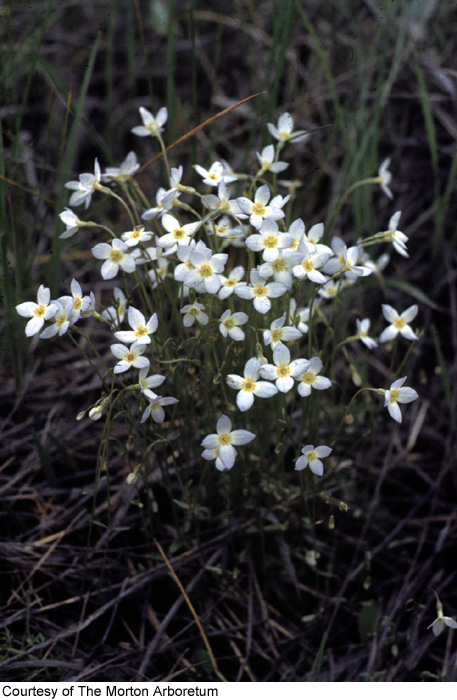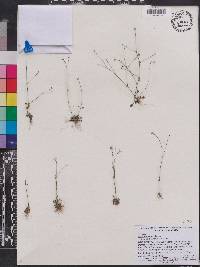Annual or perennial herb with a very slender rhizome 5 - 20 cm tall
Leaves: opposite. Lower leaves stalked, 5 mm - 1.5 cm long, reverse lance-shaped to spatula-shaped with a narrowed base. Upper leaves nearly stalkless, reduced in size, and much narrower than the lower leaves.
Flowers: light blue to lilac, yellow in center, trumpet-shaped, with four spreading lobes (limbs). The tube is 0.5 - 1 cm long and the limbs are 2.5 - 4 mm wide. Stamens included. Style one, stigmas two.
Fruit: a small, dehiscent capsule, 3 - 4 mm wide, broader than long, flattened, paired. Seeds spherical, pitted.
Stems: shortly creeping, eventually forming clumps, slender, sparingly branched below.
Flower stalks: terminal and from the upper axils, one-flowered, upright, slender, 2 - 7 cm long.
Similar species: The light blue, yellow-eyed flowers distinguish this species from all other Houstonia in the Chicago Region.
Flowering: mid-April to late August
Habitat and ecology: Locally frequent in flat sandy prairies and occasionally found in sterile areas of woodlands.
Occurence in the Chicago region: native
Etymology: Houstonia is named after Dr. William Houston (1695-1733), a Scottish-born surgeon and botanist who collected plants in Mexico and the West Indies. Caerulea means "dark blue."
Author: The Morton Arboretum


